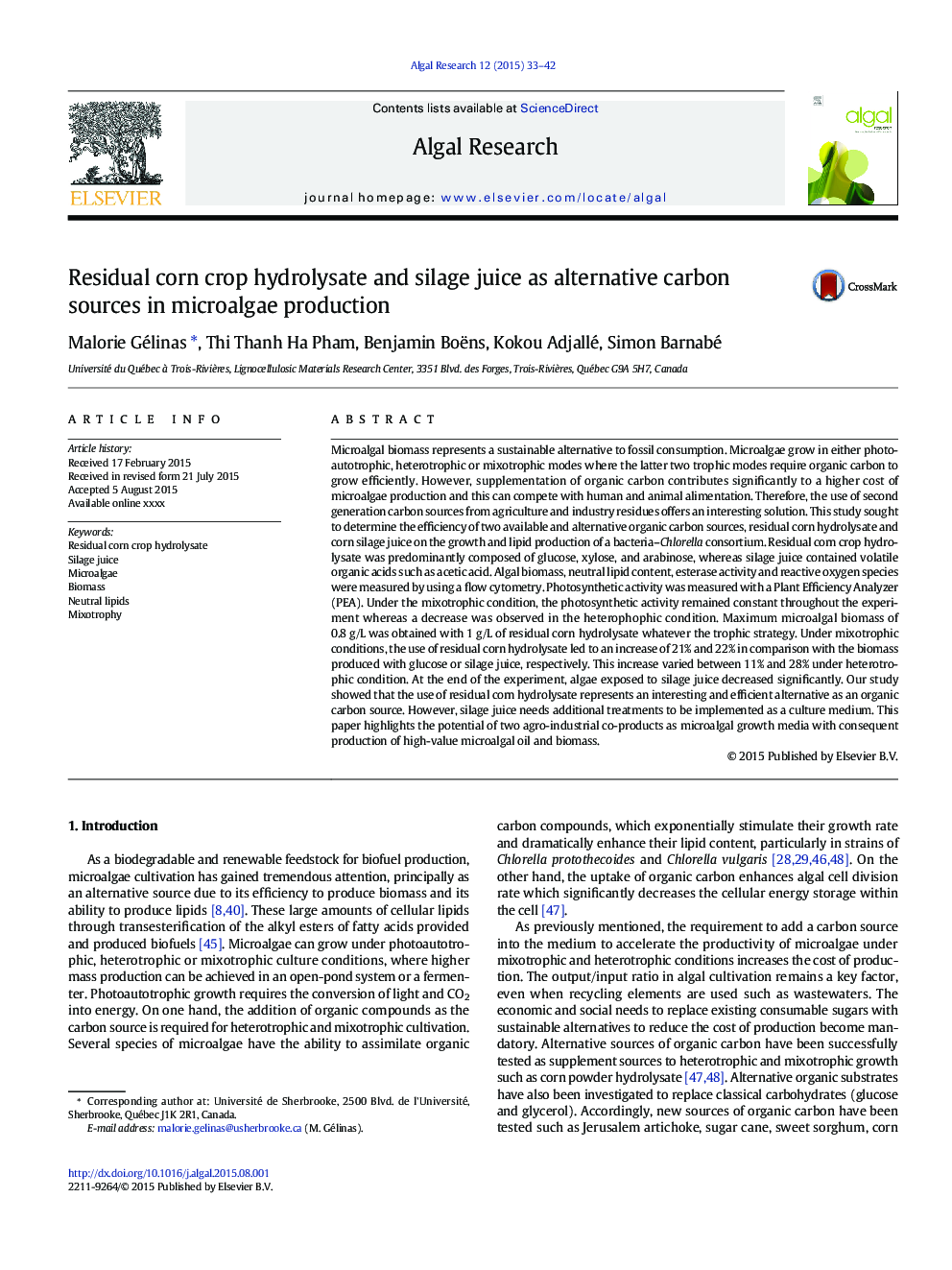| Article ID | Journal | Published Year | Pages | File Type |
|---|---|---|---|---|
| 8087717 | Algal Research | 2015 | 10 Pages |
Abstract
Microalgal biomass represents a sustainable alternative to fossil consumption. Microalgae grow in either photoautotrophic, heterotrophic or mixotrophic modes where the latter two trophic modes require organic carbon to grow efficiently. However, supplementation of organic carbon contributes significantly to a higher cost of microalgae production and this can compete with human and animal alimentation. Therefore, the use of second generation carbon sources from agriculture and industry residues offers an interesting solution. This study sought to determine the efficiency of two available and alternative organic carbon sources, residual corn hydrolysate and corn silage juice on the growth and lipid production of a bacteria-Chlorella consortium. Residual corn crop hydrolysate was predominantly composed of glucose, xylose, and arabinose, whereas silage juice contained volatile organic acids such as acetic acid. Algal biomass, neutral lipid content, esterase activity and reactive oxygen species were measured by using a flow cytometry. Photosynthetic activity was measured with a Plant Efficiency Analyzer (PEA). Under the mixotrophic condition, the photosynthetic activity remained constant throughout the experiment whereas a decrease was observed in the heterophophic condition. Maximum microalgal biomass of 0.8Â g/L was obtained with 1Â g/L of residual corn hydrolysate whatever the trophic strategy. Under mixotrophic conditions, the use of residual corn hydrolysate led to an increase of 21% and 22% in comparison with the biomass produced with glucose or silage juice, respectively. This increase varied between 11% and 28% under heterotrophic condition. At the end of the experiment, algae exposed to silage juice decreased significantly. Our study showed that the use of residual corn hydrolysate represents an interesting and efficient alternative as an organic carbon source. However, silage juice needs additional treatments to be implemented as a culture medium. This paper highlights the potential of two agro-industrial co-products as microalgal growth media with consequent production of high-value microalgal oil and biomass.
Related Topics
Physical Sciences and Engineering
Energy
Renewable Energy, Sustainability and the Environment
Authors
Malorie Gélinas, Thi Thanh Ha Pham, Benjamin Boëns, Kokou Adjallé, Simon Barnabé,
